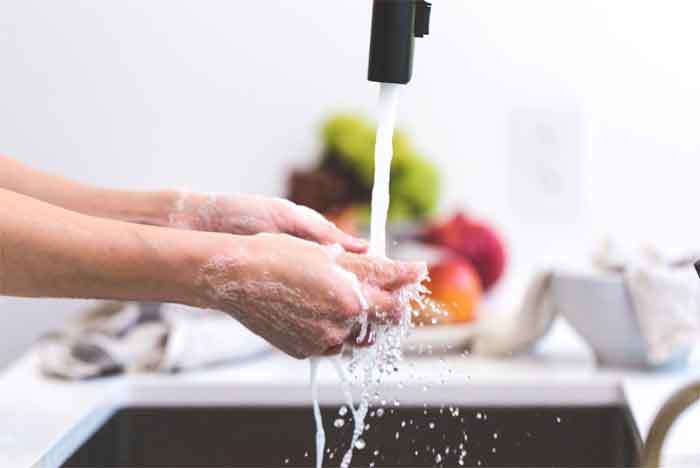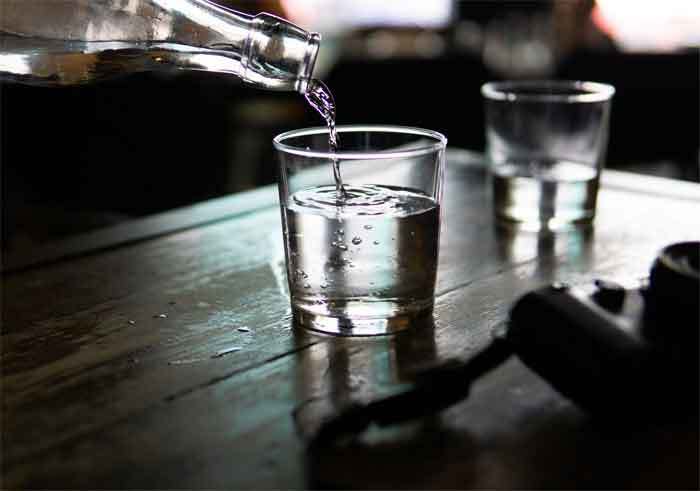Disclaimer: This post may contain affiliate links, meaning we get a small commission if you make a purchase through our links, at no cost to you. For more information, please visit our Disclaimer Page.
There has always been a debate concerning human health. Everyone has different opinions about what's good for you and what's bad for you. Water is not immune to this debate. It is not surprising that everything we touch is riddled with some kind of toxins.
Living in today’s world, all of us are continually subject to some kind of toxic chemicals. They are in the air we breathe, the food we eat, and the water we drink. There are dangerous chemicals in the ground we plant our fruits and vegetables!
So, toxins are not news. But, every day, we try new methods and ways to protect and save ourselves.
Owing to advancing technology, the way we prevent the toxins from entering our organisms is facilitated. I’m mainly talking about purifying water in order to get rid of chemicals and other impurities that are ever so present in our tap water.
The two best (and competing) home systems for purifying water available are RO and DI systems.

What Are RO/DI Water Systems?
RO (reverse osmosis) and DI (deionized) water systems are water filtration systems you can install in your home so as to ensure best quality water. Their primary role is to remove particles, toxins, and various other contaminants from water. This is also their main advantage.
The systems mainly remove lead, salt, mercury, asbestos, copper, etc. in addition to this, DI water system adds hydrogen to water which means that it acts as a water softener – this is great for areas that have hard water.
Besides home use, there are other places one could normally find one of these systems. These places include labs and aquarium manufacturing processes of sorts. This water is also great for cleaning purposes.

Although many will put up RO and DI water against each other - they will compete what is better in doing its job - but the truth is that besides using different reactions to clean water, and what chemicals they remove from it, RO and DI water purifying systems are pretty similar.
However, as I have mentioned, the systems aren’t exempt from the debate.
When it comes to drinking water, every municipality has various systems that clean and purify drinking water that comes from the main water supply to every home. They will even add certain minerals and substances that are necessary for our health.
Therefore, some believe that using RO and DI water systems to purify drinking water is not such a great idea since these systems will also remove these “good” minerals that we need.
Now we will see detailed information about both RO and DI water systems, in which ways they are not the same, and why it is important to consider using one of these systems yourself.
RO Water Purifying System
The reverse osmosis water system was originally designed to remove salt from seawater. It is one of the most efficient water purifying technologies available right now.
This system is known to remove up to 90-99% of all of the resolved solids that are found in municipal tap water.
As its name suggests, reverse osmosis is an opposite process that is called osmosis. Osmosis is a natural process in which the water molecules move across a semi-absorptive membrane. In this way, water naturally changes water from a low ion concentration to a higher one, in order to create reverse osmosis (RO) water.

This is what is happening in our organisms all the time. Through this process, water is distributed to every cell in our body, and water is modified to ensure maximum consummation necessary for all proper cell processes.
So, essentially, this is actually what happens when you use superficial reverse osmosis water system.
By applying more pressure to the more concentrated (dirtier) side of the semi-permeable membrane, water molecules are pushed back across the membrane to the less concentrated (cleaner) side. This course of action results in cleaner water.
Impurities that are removed with the RO water system include:
- Arsenic
- Lead
- Chlorine
- Silicates
- Organic chemicals
- Pesticides
- Herbicides
- Asbestos
- Radionuclide
- Cysts
The resulting product water is thus cleansed of solidified contaminants, but it is still saturated with oxygen and salts.
This system for cleaning water uses very fine filters. The membrane pores are so small so only purified water passes through. As with everything, this system is not perfect. However, reverse osmosis is oftentimes used as a first of many steps in cleaning tap water.
RO system will remove up to 99% of contaminants, and another system will be set up, to remove the remaining 1% of the contaminants.
That being said, the membrane used in RO systems can last for years, if used properly. This system is very cost-effective. It requires minimal maintenance, and there's no need for constant filter changing.
DI Water Purifying System
Deionized (DI) water is water that has been passed through the DI filter and is, therefore, free of ions. Dissolved particles in water are chemically removed through deionization.
DI filters have many names such as Ion Exchange, Strong Acid/Strong Base, etc.
Nuclear grade DI filters can remove Inorganic chemicals down to very low part per billon (PPB) levels. This produces ultra-purified water. The water of this quality is used with the most sensitive laboratory analytical instruments.
DI filters function by exchanging positive hydrogen and negative hydroxyl molecules for positive and negative water contaminant molecules found in water. For instance, positive chemicals, like calcium, exchange places with the hydrogen molecules and negative chemicals, like iodine, exchange places with the hydroxyl molecules.

Over time, positive and negative contaminants will displace all active hydrogen molecules on the DI resin, which means the filter must be replaced.
In addition to this, it must be noted that deionization is an on-demand process. In other words, ultra-purified water will remain so only for a very short time. Moreover, deionization won't remove dissolved organic chemicals. This is because deionization is not a physical filter with pores, thus it won't remove bacteria and particulates.
DI water system will on the other hand remove:
- Calcium Ions
- Magnesium Ions
- Metallic Ions
- Dissolved salts
What’s the Difference between RO and DI Water Systems?
The main difference between RO and DI water systems is the level of cleaning that’s happening.
Moreover, RO water system will remove dissolved solids from the water, but won't remove oxygen and salts. DI water system will remove the oxygen and salts, but it cannot purify the water of dissolved solids.
For maximum water purifying, these two systems are often used together. This is extremely important in industrial processes, laboratories and places as such.
Also, as mentioned above, DI water is an on-demand solution. RO water, however, can be cleaned in batches and saved for later use.
Another difference is the level of maintaining and the price. RO water systems are cheaper and require low maintenance. On the other hand, DI water systems require changing the filter from time to time and are slightly higher in price.
Why You Need It: RO/DI Water
It is fairly self-explanatory why you need to consider installing either (or both) RO or DI water purifying systems in your home plumbing system.
From the dawn of time, humans as species evolved through drinking surface water i.e. drinking water from streams and rivers. When we developed irrigation systems, we were able to use groundwater.

Surface water is naturally low in minerals. Adversely, groundwater has a rather high mineral concentration. These minerals are not dangerous per se – in low quantities. But we drink water every day in order to survive.
So some of the minerals found in water cannot be easily absorbed by our organism. They accumulate in our organs and tissues and can lead to many illnesses, instead of preventing them. Hence, RO and DI water systems will help in battling this issue.
Since this remains quite a controversial topic, I feel the need to mention why it is so. It is mentioned that the DI water system has the power to remove chemicals such as magnesium and calcium. These minerals are necessary for our well-being. It is important not to drink purified water exclusively.
However, the advantages of having an RO or DI water system outweigh the disadvantages.
It is highly advisable to have one installed for your home.
Conclusion: Reverse Osmosis and Deionized Water
All in all, living in the 21st century is not so easy. We need to take extra precautions in order to keep ourselves healthy. Having a water purifier system in your home can greatly contribute to our well-being.
Food goes through a long process of digesting so, many damaging chemicals have the potential to be eradicated. However, water is directly absorbed into our cells. And if it is dirty, it can be very damaging to our bodies.
